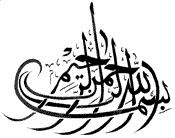 That night, after visiting (revisiting actually) a few other places, we arrived in Pulau Pinang. After dinner, we head straight for this place, the Lebuh Aceh mosque...
That night, after visiting (revisiting actually) a few other places, we arrived in Pulau Pinang. After dinner, we head straight for this place, the Lebuh Aceh mosque...
 In fact, it was the focal point for all Malays and Muslim from around the region to as far as Kelantan and Singapore. Before airplanes became the main mood of long distance travel, Muslims used to go for the pilgrimage to Mekah or Haj by ship. Pulau Pinang was the embarkation point and Lebuh Aceh was the place they congregated at for up to months before the long journey to the Arab peninsular began.
In fact, it was the focal point for all Malays and Muslim from around the region to as far as Kelantan and Singapore. Before airplanes became the main mood of long distance travel, Muslims used to go for the pilgrimage to Mekah or Haj by ship. Pulau Pinang was the embarkation point and Lebuh Aceh was the place they congregated at for up to months before the long journey to the Arab peninsular began. A closer look at the tower...
A closer look at the tower... Time to go inside...
Time to go inside... As my wife talked to the custodians of the mosque, my friend Shamsul took some proper photographs. For the record, this journey to the North (also the journey to the East Coast a month earlier and the South almost two months ago) was made to record some pictures and stories for an upcoming coffee-table book about mosques in Malaysia.
As my wife talked to the custodians of the mosque, my friend Shamsul took some proper photographs. For the record, this journey to the North (also the journey to the East Coast a month earlier and the South almost two months ago) was made to record some pictures and stories for an upcoming coffee-table book about mosques in Malaysia. We also visited the tomb in front of the mosque especially that of Syed Hussein Aidid who opened up Lebuh Aceh. While the official statement says the mosque was built in 1808, the custodians said the correct year was 1795. And while Western-slanted history recorded Pulau Pinang as discovered and then developed by Francis Light in 1786 (excuse me for refusing to put the title Sir in front of his name), the custodians said Light actually borrowed money from Syed Hussein to develop the island!
We also visited the tomb in front of the mosque especially that of Syed Hussein Aidid who opened up Lebuh Aceh. While the official statement says the mosque was built in 1808, the custodians said the correct year was 1795. And while Western-slanted history recorded Pulau Pinang as discovered and then developed by Francis Light in 1786 (excuse me for refusing to put the title Sir in front of his name), the custodians said Light actually borrowed money from Syed Hussein to develop the island!While official history tried to belittle his actual importance by describing him as just a wealthy trader with some associating him with Aceh royalty, the fact is he was actually the Sultan (ruler) of Aceh, albeit for three days! Circumstances then including in-fighting from other members of the royal family forced him to abdicate the throne in favour of his son.
The truth is, he was actually deeply involved in the fighting against colonial rule especially that of the Dutch in Aceh. He used Pulau Pinang as a base to get weapons to help Aceh citizens fight against the Dutch.
While full frontal war against Aceh by the Dutch was only declared in 1873, there were numerous attempt to destablise the great Malay Islamic empire through several means since the early 17th Century. Often royalties were pitted against each other using diplomatic channels and this became the Western colonialists (English included) main modus operandi of conquest until the whole Malay archipelago succumbed to colonial rule by the middle of the 19th Century. That's all...










No comments:
Post a Comment